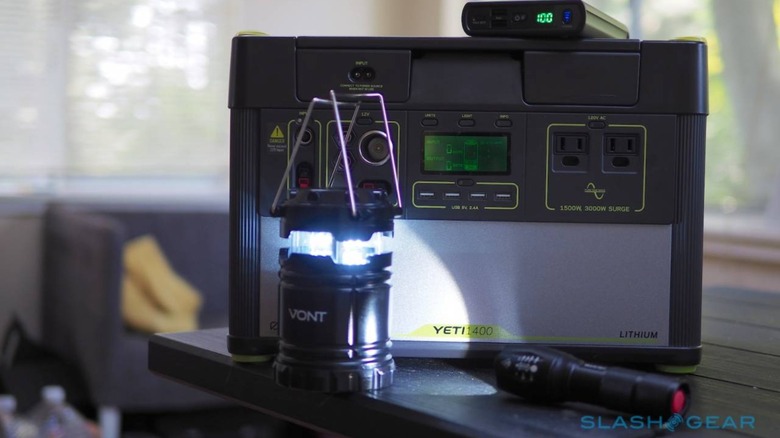How To Survive A Power Outage: Generators, Portable Batteries And Caffeine
Whether it's a planned outage or an unexpected one, losing power at home is never fun, but with some straightforward preparation it needn't be a nightmare. With big chunks of California going offline this week – myself included – it's been a good opportunity to test out my emergency plan, including some low-tech preparation and some high-tech gadgets like the latest battery backups. Here's what has worked for me, and how it might help you.
Outage prep: Every home is different
What you'll miss during a power outage will depend on how your home is set up. Our range uses gas, as does our tanked hot water heater; both will keep on trucking even with no electricity. The heating, however, needs both gas and electric, and of course there are plenty of appliances and gadgets that go offline if they don't have power.
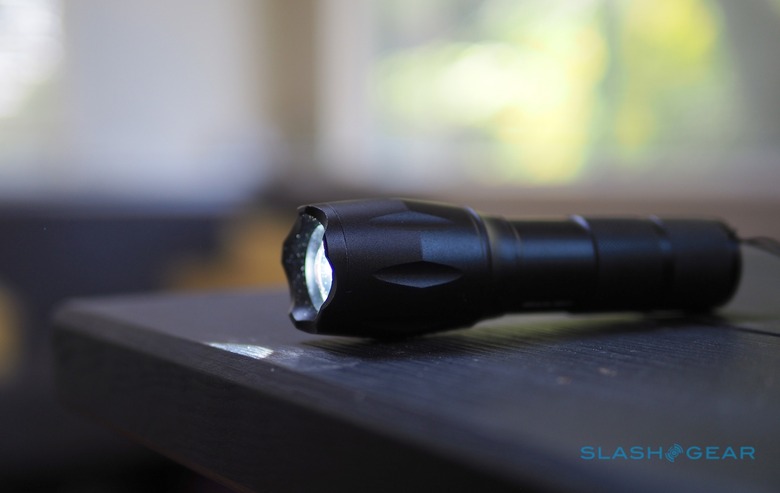
If you do all your cooking with a microwave, rely on electric heating and A/C, and have an electric water heater or a tankless gas-powered one, your experience in an outage is going to be a lot worse. Conversely, if you heat using a wood-burning stove, cook and heat water with gas, and don't have or need A/C, the impact of a power cut will impact you far less.
Regardless of all that, the list of essential things you don't want to be without – or shouldn't be without, for safety purposes – is probably roughly the same. Some way of keeping in contact with the outside world, most likely a smartphone; reliable and safe lighting; some form of heating; and backup power to keep a small subset of gadgets up and running. Once you've got the basics covered, you can choose to invest a little more and make outages less stressful.
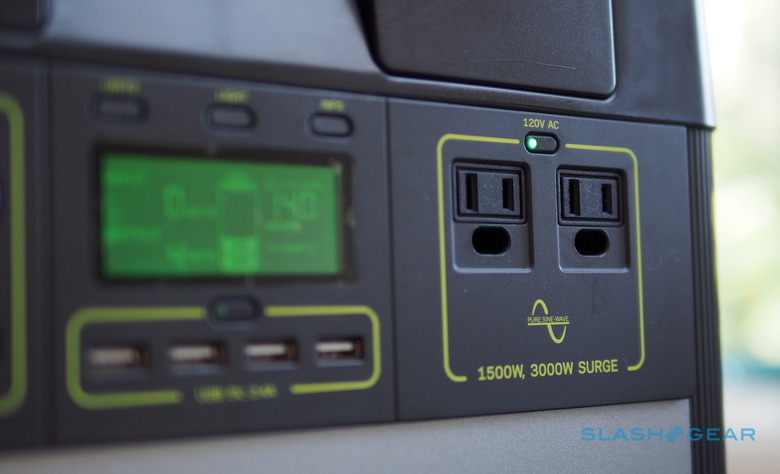
A go-bag and an emergency kit
I didn't think about emergency preparedness until I moved to California. Even living in San Francisco, my emergency kit was pretty mediocre. It was only when I moved out of the city, into a place where storms and strong winds were a pretty reliable precursor to downed power lines and electricity outages, that I began to take it seriously.
What you need is both a go-bag and an emergency kit. The former is the bag of stuff you want to grab if you need to leave home in a hurry; the latter is made up of the essentials you might require if you have to camp out at home without power for a while. There's almost certainly going to be some overlap between the two.
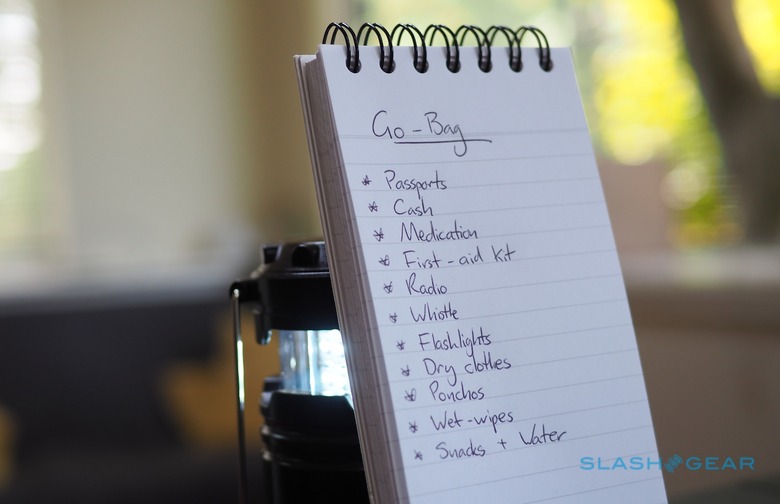
You can go wild with what's in each kit, but I try to keep ours relatively straightforward. The go-bag – aka a "bug-out bag" – gets passports and other important papers, some cash broken down into smaller bills (since ATMs, store registers, and gas pumps all require power), and any essential medication we might need. There's a small first aid kit and a wind-up radio, an emergency whistle, a multitool, a couple of compact LED flashlights, spare underwear, some plastic ponchos, and a few packs of wet-wipes.
I also make sure we have snack bars and bottles of water on hand, to grab along with the bag. If you're not near a metro area, you might want to go more in-depth.
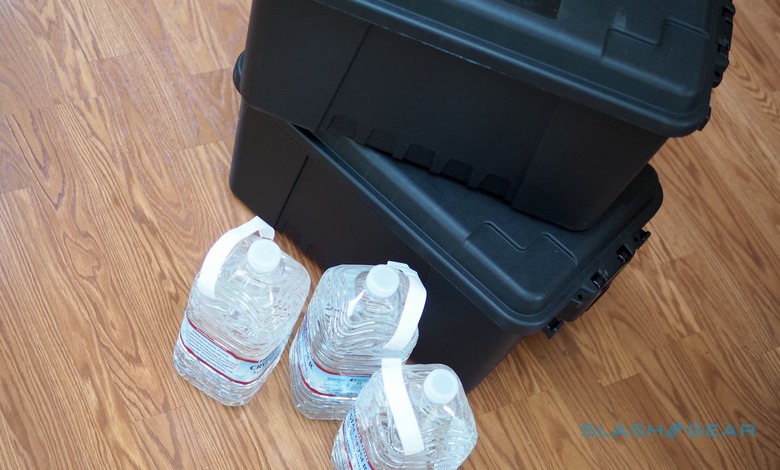
Our emergency kit is more comprehensive, though it still fits into two waterproof plastic trunks which could also fit into the car if required. On top of what's in the go-bag there are toiletries, paper towels, trash bags, and a small gas stove (plus canisters of gas). Cooking equipment intended for camping fits in there too, along with enough canned food for a couple of people to eat for a week. The recommendation is that you have a gallon of fresh drinking water on hand per person, per day.
The other thing to bear in mind is pets. We have a cat, so her large carrier is kept by the emergency kit cases. There's also a stock of her normal canned food, a collapsable feeding bowl, a small collapsable litter tray and litter, and a harness and leash that she hates wearing. A cheap vacuum food sealer meant I could package up kibble into smaller portions to keep it dry and fresh over an extended period. Obviously if your dog, cat, or other pet needs medication you should make sure that's readily to hand, too.
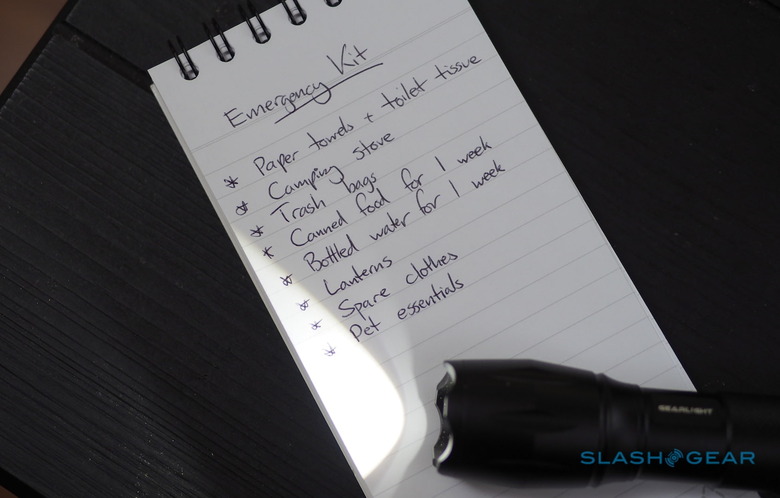
To be clear, there are plenty of people who would say that we're still woefully under-prepared. There are no kids to think about, who would have specific needs of their own – and might be more demanding when it comes to distractions. We don't have to deal with medication that requires refrigeration, either, or powered medical equipment. All the same, we do have a power backup system we rely on.
Generators, batteries, and solar
It's only when the power goes off that I remember just how much I rely on electricity, and how many devices we have plugged in. Paring those back to the essentials took a little planning, but we currently have a setup that, for us, works well. As I said, your situation may be a little different, and things may require some tweaking.
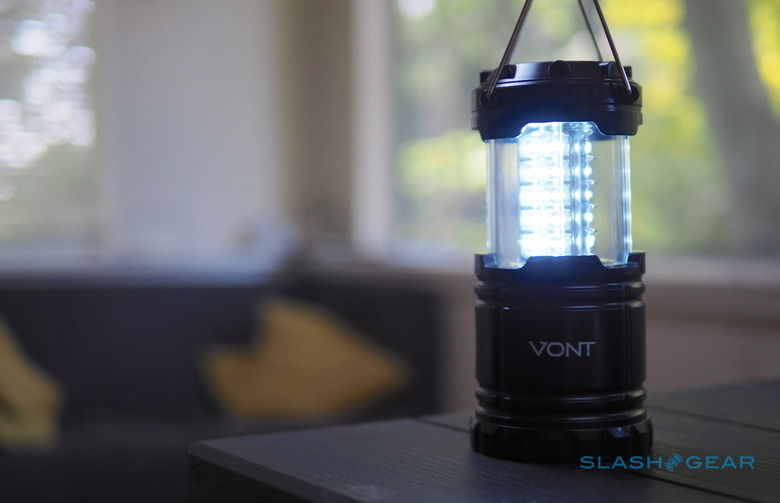
A handful of battery-powered LED flashlights and/or lanterns are essential, far safer than candles, and they're relatively inexpensive too. If you're buying a flashlight, I prefer those that use regular AA or AAA batteries, since they're most readily replaced. A flashlight with a flat base can be stood up on its end and, by bouncing light off the ceiling, used as an impromptu lantern to illuminate a whole room, too.
After the first few power cuts we sat through, we bought a gas generator for emergency use. If you're picking a gas generator, you'll want to do some back-of-an-envelope math on how powerful it needs to be for what you want to run. Wattage is the key here: you'll find that figure on a label on whatever device you intend to plug in. Bear in mind that some items – like a refrigerator – will have both a larger "starting" wattage and a lower running wattage, and so your generator will need to support the higher figure. It's also worth leaving some power headroom: not only are you likely to end up wanting to plug something else in that you didn't necessarily plan for originally, but the maximum run-times manufacturers quote aren't usually based on full load.
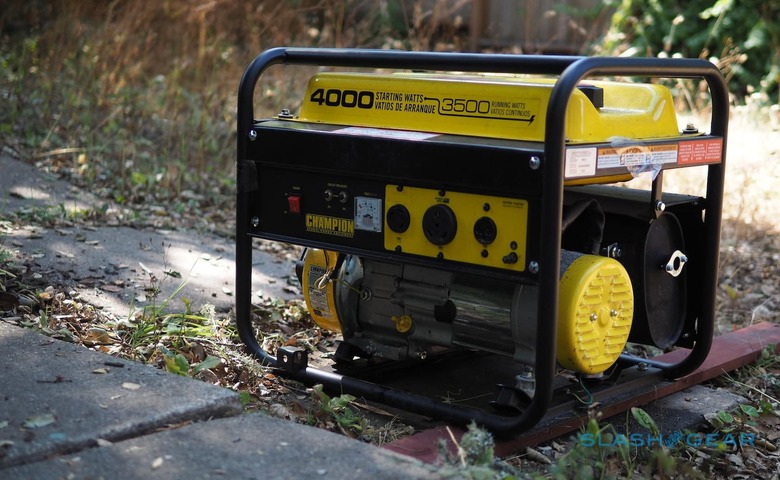
We ended up going for a 3,500 watt Champion model which was under $350; there were cheaper models, but the 4,000W starting watts meant it was potent enough to keep our fridge-freezer running. Keep the doors closed, and the typical refrigerator will stay at safe temperatures for around four hours; an unopened freezer will last around 24-48 hours, depending on how much is inside.
Gas generators have a couple of really important caveats if you're going to use them safely – get that wrong, and having no electricity is the least of your concerns. Most serious is ventilation: you should never run a generator indoors, or in a garage, since they give off poisonous carbon monoxide. That can literally kill you in minutes.
We have a yard that we can safely run the gas generator in, with a long cord to deliver the power through a window and into the kitchen. If you don't have outside space, or the thought of dealing with refilling the gasoline every 24 hours or so is a turn-off, a backup battery may be the answer.
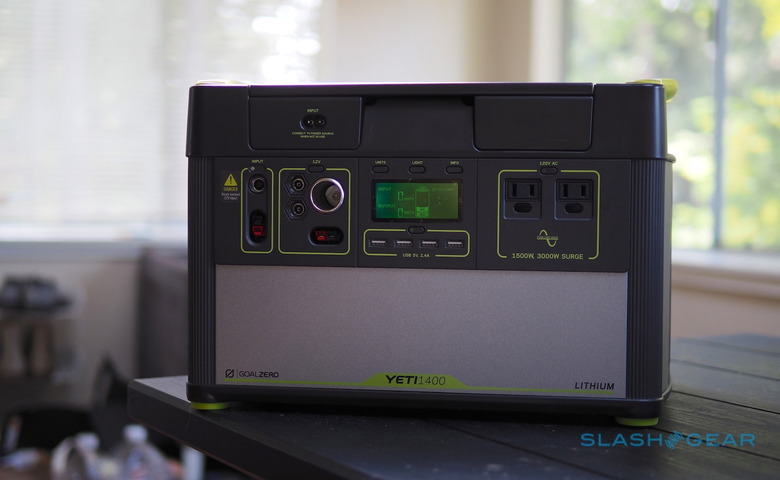
I've been using one from Goal Zero, an $1,800 Yeti 1400. It has a 1,425 Wh li-ion battery that can be charged from a regular outlet, or by connecting solar panels. Usually it sits in the corner, constantly plugged in; unplugged and unused, Goal Zero says it should hold its charge for at least 12 months. On the front there are a variety of options to plug in your devices: USB ports, 12V sockets, and a pair of 120V AC outlets that can deliver 1,500W with 3,000W surge. Usefully you can choose which to turn on, so that you're not wasting power on ports you're not actively using. A small screen shows power flowing in and out, the level of charge, and an estimate on how long it should last at current load.
It's not cheap, but there are some big advantages. For a start, it's silent and you can run it safely indoors. Using li-ion rather than lead-acid or NiMH batteries make it far more portable: it's about half the size of an average cooler. 1,425 Wh is enough for more than seventy recharges of your smartphone, or more than 23 recharges of the typical laptop. However I was most interested in the fact that it can keep a typical fridge running for 23+ hours.
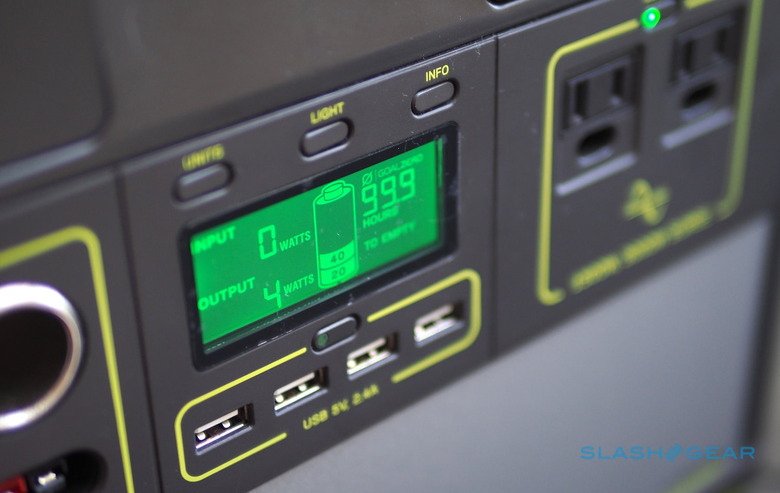
Actually, the gas generator and Goal Zero battery work great in tandem. I can have the battery powering the essentials day and night, and not worry about the generator noise, but then use the gas power to top up the Goal Zero for extended outages. It's probably not the most efficient use of energy, but for the sort of occasional use we need it for it does the trick.
Another option is solar. Since we rent, having solar panels installed on the roof isn't a possibility, much less integrated backup batteries like Tesla's Powerwall. The Yeti 1400 is compatible with solar charging, however, and Goal Zero has a range of folding solar panels that plug straight in.
They're a little expensive but, with the right adapter, you can use far cheaper solar panels with the battery. A $90 100W panel combined with a $15 cable offers an off-the-grid way to recharge, and you can daisy-chain multiple panels together to make it even faster. Plugged into the wall with the 5A power supply Goal Zero supplies, you're looking at 25 hours to fully recharge the Yeti 1400; with the maximum supported 360W of solar panels, that drops to around 4.5 hours.
My top tips for surviving an outage
Even if you don't go the whole hog and get a generator of some sort, there are still a few straightforward ways to make surviving a power outage more comfortable.
1. Get a good power-pack
Portable batteries are a life-saver if you're trying to keep your phone running, especially if you're also relying on it as a WiFi hotspot. I've been impressed recently by the Goal Zero Sherpa 100PD, a $169.95 model roughly the size of a hardback book. It has a 94.7 Wh li-ion battery, enough for 8 full phone charges or two USB-C laptop charges.
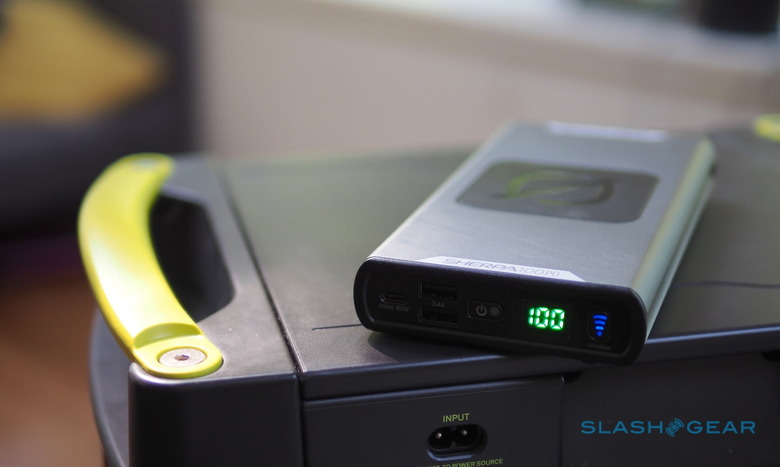
Its 60W USB-C PD port can handle most laptops, and there are two 12W USB-A ports and a 5W Qi wireless charging pad on top. I really like the LED display showing battery percentage on the front – it's much more reassuring than a row of four or five LEDs – and the fact that it feels tough enough to survive in a bag without demanding some sort of case.
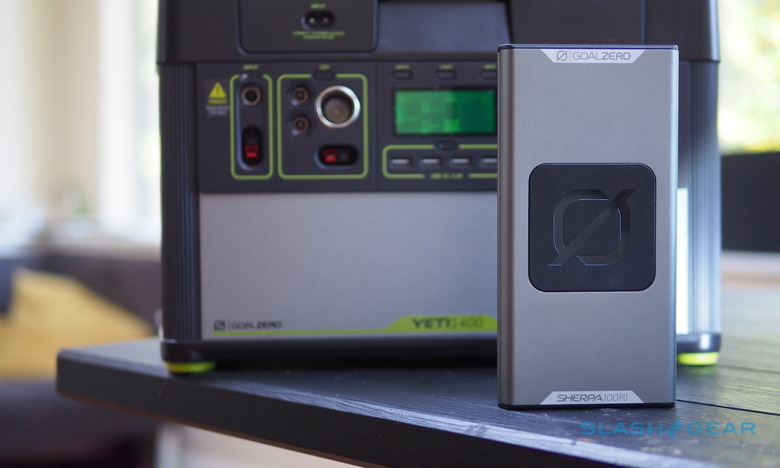
If you can live without laptop charging, meanwhile, Mophie's Powerstation Hub is a good option. At $99.95 it has two 15W USB-A ports, a 15W USB-C, and a 5W Qi wireless charging pad; it plugs straight into the wall with fold-out AC prongs to charge its 6,100 mAh battery. A full charge is enough to extend a smartphone by about 20 hours, or a tablet by 5-8 hours.
2. Emergency lamps take the surprise out of outages
Your power company may warn you an outage is coming, or it may be a surprise: either way, there's no way to quite predict when the electricity will shut off, and that can be jarring – or even dangerous, if suddenly you're left in darkness. We have a pair of emergency lamps to take the edge off that: they plug into outlets and stay charged up, automatically turning on their LEDs when the power is turned off. You can also use them as torches.
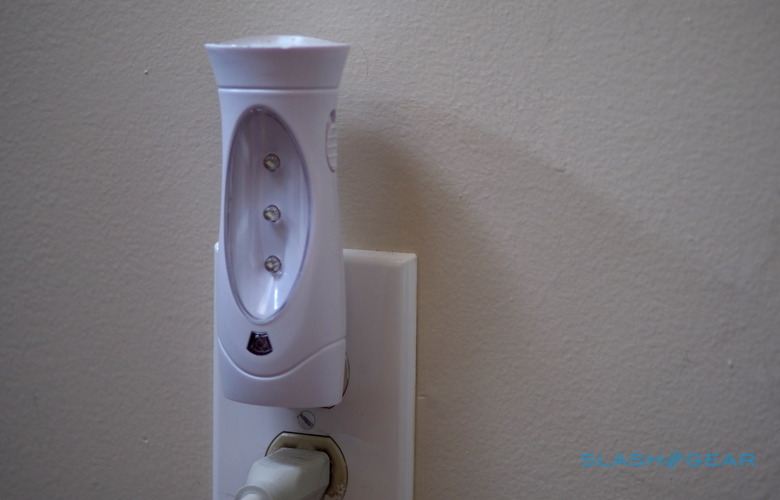
3. Fill a cooler with ice
One of the most stressful parts of a power cut is wondering what will happen to all your food. If you're got a generator or a big backup battery you can keep the fridge and freezer running; otherwise, a cooler with as much ice as it can hold is your friend. In fact, even if you're running a generator, keeping frequently-used things in the cooler – like milk, or pet food – still makes sense, since it cuts down on the number of times you need to open the fridge door. There's a big difference in power consumption for a refrigerator when the compressor is running, versus when it's idle.
4. Caffeine-addicts, grind ahead
I don't mind sitting in the dark, as long as I'm sufficiently caffeinated. If, like me, coffee plays an essential role in keeping you functional though the day, but you'd normally grind your coffee beans each time you brew, don't forget to plan ahead. Electric coffee grinders can be surprisingly demanding when it comes to power, so I fill an airtight container with ready-to-use ground coffee while the power is still on to tide me over while the electricity is out.
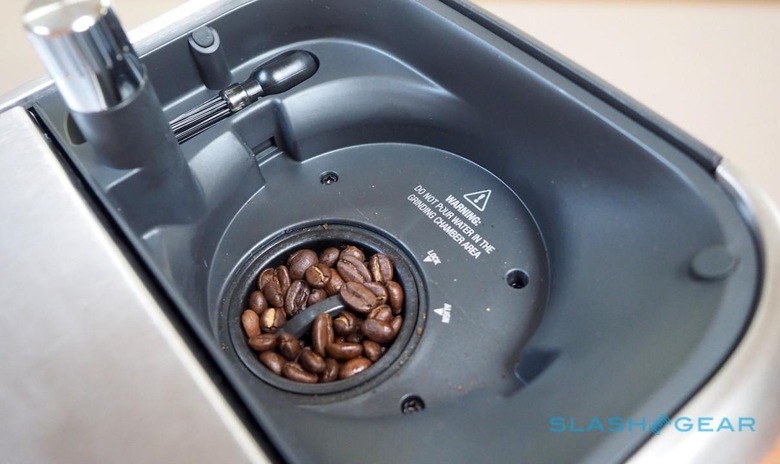
It does presume you have advance notice of the outage, of course, but having a low-tech way to get your coffee hit is always a sensible idea. If you're a pod-coffee fan, investing in a drip cone and filters, or a French press, should keep caffeine-withdrawal headaches at bay.
5. Be a good neighbor
It's easy to look at a stack of fully-charged batteries, a stockpile of food and water, and a bunch of flashlights and lanterns, and decide you've done everything that you can to keep on going through a 24+ hour outage. Problem is, the person next door might not. It's worth checking to see if neighbors are prepared, particularly if they're elderly or disabled.
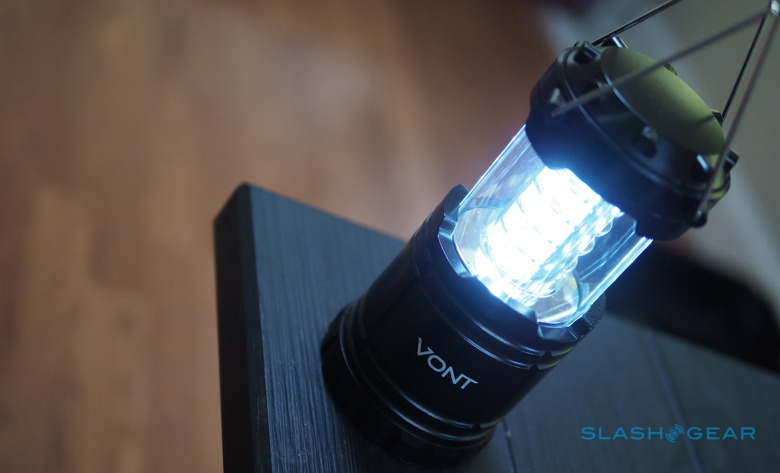
It might be as straightforward as reminding them you're nearby in case something happens, or helping them sign up for text message alerts from the local authorities. Making contact ahead of time could also flag up any potential resources should your own plan not go, well, to plan. Knowing someone has spare freezer space could come in very useful.
When the power comes back on, prepare for the next time
After about 35 hours – thankfully far short of the 5+ days the power company warned the outage could run for this week – our electricity came back on. It's tempting to instantly get back online and catch up on Twitter, plug in a console, or maybe take a long, hot shower. Just remember to take some time to pack everything back into your go-bag or emergency kit.
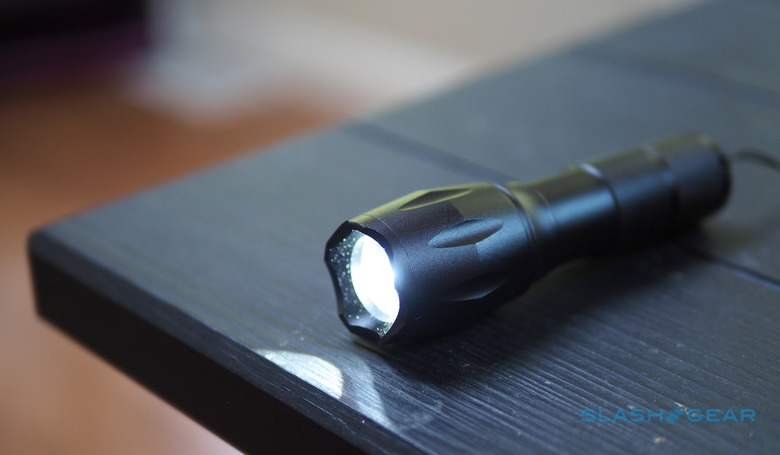
That might involve putting fresh batteries in flashlights, or replacing cans of food. It's a good idea to check through the expiration dates on food, medication, and other items too. If you have a gas generator, check the user manual to see what sort of steps are recommended before you store it away: you don't want to be troubleshooting when you're next facing a power cut.
Did I miss anything from your list of must-haves to survive an outage? I'm always looking to improve my emergency kit, so let me know in the comments...
